Pasargadae Depicts the First Persia Capital
Pasargadae, a land that dates back to ancient Paleolithic excavations with historic stories lies on the slopes of the Zagros mountain range, though long lasting, owes its full reputation to the powerful Achaemenid empire. The ancient city of Pasargadae was the first capital of the Achaemenid Empire located in Pasargadae area of Fars province that the name is derived from the name of the tribe of the Persian kings, the Pasargadae tribe, which means “those who kill the invaders”.
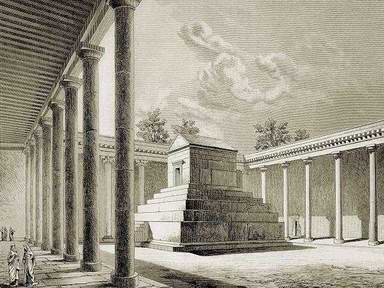
History of the First Achaemenid Capital
The Pasargadae Historical Complex, built by the command of Cyrus the Great, it includes the tomb of Cyrus the Great, the winged man’s palace, the palace, the special palace, and a monument called Takht-e Solomon (Prison of Solomon) are examples of the first phase of royal Achaemenid art and architecture and exceptional testimonies of Persian civilization.
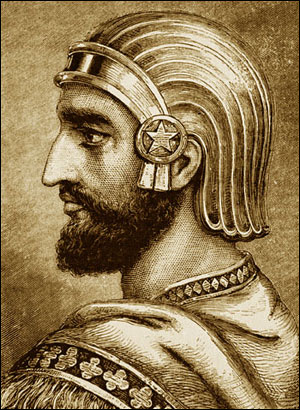
Architecture of Cyrus the Great Capital
Palaces, Garden and the Tomb of Pasargadae
The palace consists of a central hall, two porches to the west and east, and two open spaces to the north and south which consist an inscription in three languages: Elamite, Persian and Babylonian, located on the only stone of the palaces. Major building materials such as stone, brick and wood are used in the construction of Pasargadae. Of course, more wood is used to cover the ceiling, hard brick, and brittle black marble are also the constituent materials. The monastery of Cyrus the Great is located in the middle of the royal gardens and is made of huge seven meters long stones and the tomb building has two distinct parts that at the entrance to the tomb is located northwest with a width of 75 centimeters.
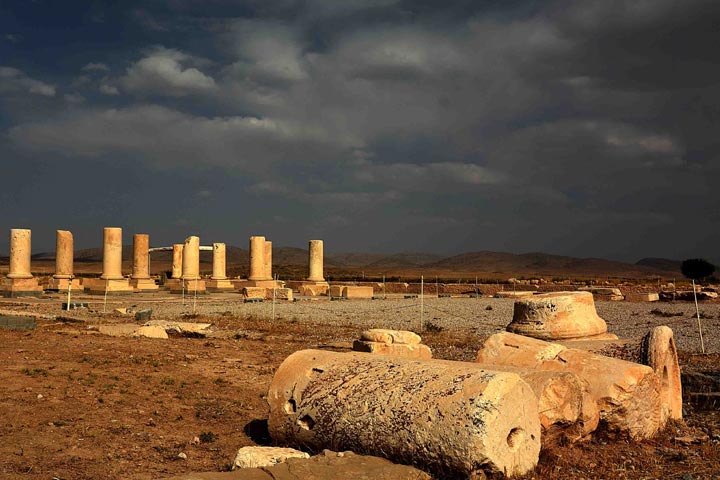
Tomb of Cyrus the Great in Pasargadae
Cyrus the great as founder of Achaemenid Empire is called ‘Father’ among Persians and ‘Messiah’ among Jewish and ‘Master’ among Greeks is buried in Pasargadae. In 1820, during a series of excavations and citations to the available evidence, the tomb was attributed to Cyrus the Great whose dead body rested on a golden bench in a stone enclosure above a jewel, which has always been respected throughout history. The Achaemenids carried their coronation here. During Alexander’s devastating attack on Macedonia, when Alexander the Great was conquered Tomb of Cyrus, he encountered a tablet that Cyrus the Great had faced for the audience he expected to facer, the mortality of the world and the respect for his tomb, Alexander did not damage the tomb in Cyrus honor and ordered the tomb to be decorated inside.

Prison of Solomon in the First Persia Capital
Prison of Solomon is one of the most peculiar monuments of the Pasargadae Historical Complex, dating back to the Achaemenid period and is a four-sided tower known as Suleiman Prison in the Islamic period, with only one wall remaining, also it is believed that tomb of Cambyses the son and successor of Cyrus located in Suleiman prison.
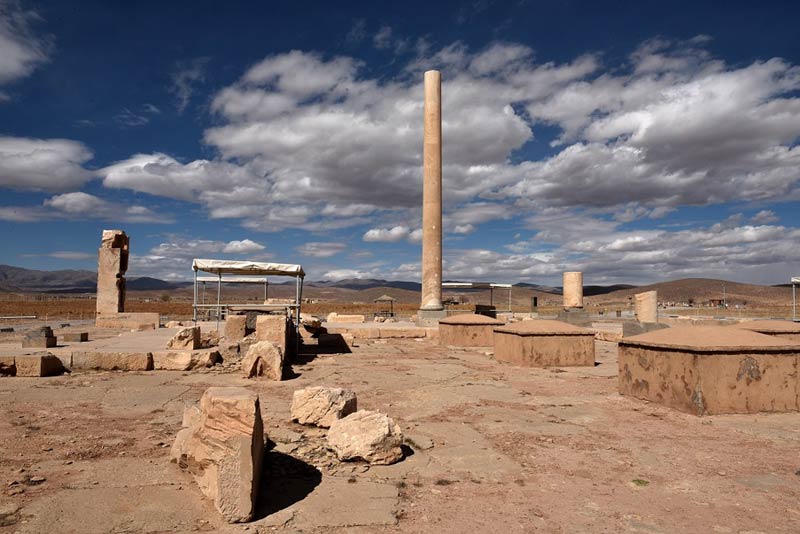
Prison of Solomon Introduction
Pasargadae is a valuable collection that has been remembered since ancient times in Persia, placing precious treasures of Persian history and culture in its heart. The “Tomb of Cambyses” or “Soleyman’s Prison” is a relic of the Achaemenid era, also a masterpiece of Achaemenid engineers and artists in the Pasargadae complex.
Architecture of Pasargadae Prison of Solomon
The tomb of Cambyses in Pasargadae is a structure made from a mixture of stone, dry mortar, and white marble, besides some black limestone was used to make the window blind. The only surviving wall, at present, is standing by scaffolding, installed by an Italian team to maintain it. The mansion of the tomb possesses a tower-like and rectangular appearance, of which only a wall remains today.
The Cambyses tomb’s height is about 14 meters and 7.23 meters in length on a three-step platform. Its entrance height is 7.50 meters above the ground, and it is located to the northwest. In the past, they climbed 29 steps to access the room at the top of the tower.
Cambyses II, or Kambiz, is the second Achaemenid king and the eldest son of the Great Cyrus.
History of Prison of Solomon
Archaeological evidence depicts that Darius the Great required a similar building in Naqsh-e Rustam, which is now called the Cube of Zoroaster due to its marvelous architecture, great strength, and beneficial function. These two buildings also have differences; the Cambyses tomb is more fortified, older, and technically stronger than the Cube of Zoroaster. In terms of architecture, the tomb of Cambyses II and the Cube of Zoroaster are exceptional. The Cambyses II tomb is associated with the architecture of the great Cyrus tomb in the field of Achaemenid contemporary construction.
Pasargadae Prison of Solomon Function
Hypotheses and conjectures have also been made about the role of Cambyses tomb during the Achaemenid period, some of which consider it a place for keeping government documents. Others considered it a fire temple and a worship place, where protected the fire from wind and rain, and some knew it as the tomb of Cambyses. This stone wall exists on the north side of the Pasargadae palaces. According to experts, it has both religious and burial architecture. The building was renamed Soleyman (Solomon) Prison in the early Islamic period. Furthermore, it has been inscribed on the UNESCO World Heritage List.
The Gate Palace of Achaemenid Capital
The Gate Palace was the main entrance to Pasargadae, the capital of Cyrus, which is now the only surviving remains, There were many similarities with the gates of the nations of Persepolis .The most important and only historical monument remaining from this palace, which is world famous after the tomb of Cyrus, is the lithograph of “Winged Man” which is located between the Gate Palace that the image of a man with a beard and a crown on his head and four wings, and his standing position is a kind of religious greeting or prayer, and he is facing the center of the palace. Researchers believe that this monument is a symbol of all the nations ruled by Cyrus and the symbol of national culture such as Assyria and Elamite.
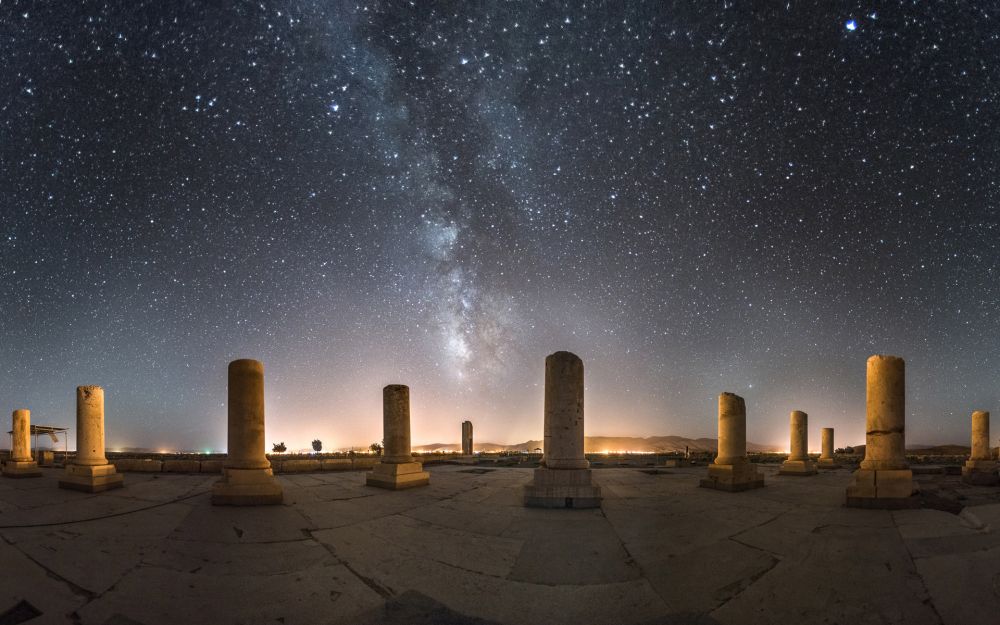
Audience Palace of Cyrus the Great
Audience Palace, Cyrus’s Reception Palace in Pasargadae where he met guests and officials from other nations, civilizations under the command of Cyrus the Great and various nations from all over the world and all cultures to exchange culture and dialogue with each other and call this palace the first headquarters of the United Nations. The design of humans, cows, fish, and eagles are among the roles used in this palace, which have entered the architecture of ancient Persia from the cultures of other nations.
The Private Palace of Pasargadae
The private palace, as its name suggests, it was the residence of Cyrus the Great’s family in Pasargadae which it seems that the soul of history has lost the way among its remnants. Near the eastern porch of the palace, there is a stone platform where the king will probably go to see his beautiful garden and paradise, and he will enjoy watching that volume of beauty. In the construction of this palace, stones with three types of white marble, black lime and blue sand have been used in the base of the columns and the floor of the porches and a beautiful inscription is carved in the heart of the great stones of this palace, which is still legible after many centuries, this inscription is in three ancient languages with the title: “I am Cyrus the Achaemenid king”
UNESCO World Heritage Criteria of Pasargadae
Criterion (i): Pasargadae is the first visible sign of the royal Achaemenid architecture.
Criterion (ii): Cyrus the Great made Pasargadae as the Achaemenid capital in collaboration with the various peoples of the Empire. This work is known as a fundamental step in the evolution of classical Persian art and architecture.
Criterion (iii): Despite its palaces, gardens and the tomb of Cyrus, the King of Persia, the Pasargadae Archaeological Site is a relic of the Achaemenid civilization.
Criterion (iv): The ((Four Gardens)) Kingdom complex, located in Pasargadae, has been an excellent example of such architecture and is known as the foundation of this form of architecture and design in West Asia at the time.

Location of Pasargadae
Pasargadae is located 130 km from Shiraz in Murghab plain,21 km from Saadat Shahr (the center of Pasargadae city). There are 4 kilometers of side roads that take you to Pasargadae. Also there are attractions around Pasargadae that you can visit; Persepolis, which is 78 km away, Naghsh-e Rustam, 73 km and Naghsh-e Rajab, 71 km away from Pasargadae.
Where to eat near Pasargadae
Hoobareh Restaurant is one of the most famous restaurants near Pasargadae and this restaurant has a traditional, pleasant atmosphere. In addition to local Shirazi cuisine, you can taste a variety of herbs, teas and local teas.
Bamdad House Restaurant is located 300 meters from the entrance of Pasargadae Complex and this restaurant is run by women and local and nomadic food is offered in it, also the design of this restaurant is simple and has a warm and pleasant atmosphere.
Where to stay near Pasargadae
Parsian 4* Hotel
Parsian 4* Hotel is another member of Parsian Hotels Group, which is located in the center of the city with amenities and desirable services and is a good choice for tourists.
Darbary 3* Hotel
The “Darbary Hotel” complex is located in the heart of the historical and cultural context of Shiraz and this 3* international hotel, one of the important advantages of this hotel is the modern, up-to-dated forms of a traditional atmosphere.
Mah Monir Residence
Mah Monir Traditional Residence ,the 120-year-old residence that dates back to the late Qajar and early Pahlavi eras and is considered an economic hotel in Shiraz.
Persepolis Tourism Complex
Persepolis Tourism Complex is one of the hotels with a history in providing tourism services and in terms of geographical location is located at 8 km of Marvdasht-Persepolis road 72 km from Shiraz city, and its 57 minutes far from Pasargadae.
Chamran Grand Hotel
Shiraz Chamran Hotel or Chamran Grand, a 5* luxury hotel in Shiraz, which is located in the highest point in the most pleasant climate of the cultural and historical capital of Persia, overlooking Qasr Al-Dasht, which gives you a unique view of Eram Garden and Hafez Tomb. Chamran Tourist Hotel complies with international quality standards, a variety of Persian, traditional and Italian restaurants, and a coffee shop with live music, creating pleasant memories of staying in a calm and pleasant environment.
Zandieh 5* Hotel
The five-star Zandieh Hotel in Shiraz is located in the Zandieh complex. This hotel is not far from the historical and cultural attractions of the city such as Karim Khan Zand complex and Pars Museum. The traditional Persian bath with impressive architecture is one of the most special services that the dear guests of this hotel can benefit from.
Aghamir Resort
Aghamir Ecological Resort in Pasargad, Shiraz, with a history of 100 years, is located in the historical context of Saadat Shahr. This residence is a native house with brick walls and a Magnificent, historical architecture belonging to many years ago and is also active in promoting cosmic tourism (Astro-tourism).
By staying at Aghamir Ecological Resort, in addition to experiencing a simple life in a native house, you can also benefit from the various programs of this accommodation. Pasargadae and the joyful local music are other important activities of this residence.
When to visit Pasargadae
The best time to visit Shiraz in the spring is from March 10th to May 20th. Because in this season, the climate of Shiraz is in the mildest possible state and the orange blossoms of spring have decorated the city. Shiraz summers are very hot versus the autumn which is a good time to visit Shiraz so you can plan a trip to Shiraz from early September to late December.
How to visit Pasargadae
We go to one of the oldest places in Persia, Pasargad, in the city of Shiraz, where the tomb of Cyrus the Great is located with authority. A stepped tomb reminiscent of ziggurat structures, like a simple shrine in the heart of Pasargadae, designed by Cyrus himself to be built in the simplest possible way.
We go to the private palace of Cyrus, one of the most magnificent palaces of the Pasargadae complex, which was the residence of Cyrus and his family, with large columns that bear many similarities to the columns left in Persepolis.
We visit the Audience Palace, where Cyrus hosted his guests, and it can be said that it was the first UN headquarters to discuss important human rights issues.
The Gate Palace is another beauty of this complex, which is in the eastern part and is the main gateway to Pasargadae, which is very similar to the Gate Palace in Persepolis. Let’s take a look at the origins of Persian gardens, which, although smaller these days, have once again housed Cyrus, his favorite flowers, plants and birds, and created a unique garden with a special irrigation system.
We will visit the stone tower which is also known as the tomb of Cambyses or Solomon’s prison and is one of the most special works of Achaemenid architects and one of the most beautiful works in Pasargad.
Finally, we look at the Talle Takht or the royal throne, which was the site of the construction of the royal citadel of Pasargadae and is also called the throne of Solomon, and was built under the supervision of the best Achaemenid architects under the command of Cyrus.
*Don’t forget comfortable backpacks and walking shoes, sunglasses, masked hats for sunny days and water bottles.
How to get to Pasargadae
One of the most exciting types of travel to Shiraz is traveling by car, which you can travel to Shiraz by passing through the historical and delightful cities of Persia, as well as by bus. If you are eager to travel by train, you can travel to Shiraz by purchasing a ticket for a longer period of time. The fastest and easiest way to travel to Shiraz is by plane, which is a daily flight from Tehran to Shiraz International Airport (SYZ) called Shahid Dastgheib Flight.

